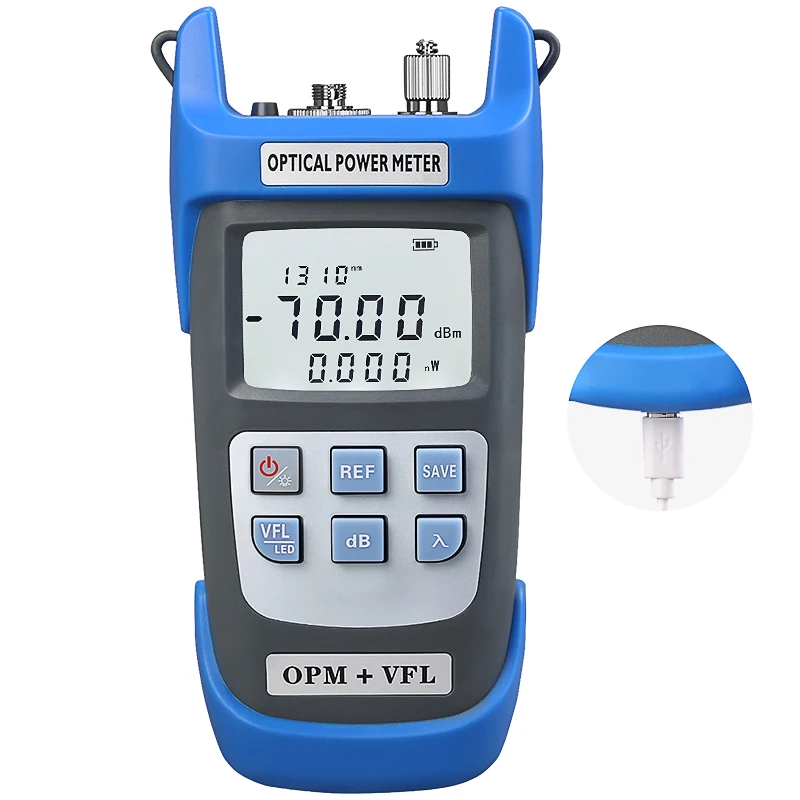In the world of fiber optic testing and measurement, choosing the right optical power meter is crucial for achieving accurate and reliable results. These essential instruments measure optical power in fiber optic systems, helping technicians and engineers maintain network performance and troubleshoot connectivity issues. Understanding the key differences between handheld and benchtop models helps professionals select the most suitable equipment for their specific applications.

Understanding Optical Power Meter Fundamentals
Basic Operating Principles
An optical power meter functions by converting light energy into electrical signals for measurement and analysis. These devices utilize specialized photodetectors to capture and quantify optical power levels in fiber optic networks. The measurement process involves careful calibration and precise sensor alignment to ensure accurate readings across different wavelengths.
Key Measurement Parameters
Modern optical power meters measure several critical parameters including absolute power, insertion loss, and return loss. These measurements typically range from +10 dBm to -70 dBm, depending on the specific model and application requirements. Understanding these parameters is essential for proper network maintenance and troubleshooting.
Handheld Optical Power Meter Characteristics
Portability and Convenience
Handheld optical power meter designs prioritize mobility and ease of use. These compact instruments typically weigh less than 500 grams and feature robust battery life, often lasting 8-12 hours on a single charge. Their portable nature makes them ideal for field technicians who need to perform measurements at multiple locations throughout their workday.
Field Applications
Field engineers commonly use handheld optical power meters for installation verification, maintenance checks, and troubleshooting tasks. These devices excel in scenarios requiring quick measurements and immediate results, such as fiber optic cable installation or emergency repair situations. Their rugged construction withstands various environmental conditions encountered in field work.
Benchtop Optical Power Meter Features
Precision and Accuracy
Laboratory-grade benchtop optical power meters offer superior measurement accuracy, often achieving precision levels of ±0.015 dB or better. These instruments incorporate advanced temperature compensation and automated calibration features to maintain consistency across extended testing periods. Their stable platform design minimizes measurement variations caused by external factors.
Advanced Analysis Capabilities
Benchtop models typically include extensive data analysis features, detailed graphical displays, and comprehensive reporting capabilities. These instruments often integrate with computer systems for automated testing sequences and detailed result documentation. Their advanced functionality supports complex research applications and high-precision manufacturing processes.
Performance Comparison Analysis
Measurement Accuracy Differences
While both types of optical power meters provide reliable measurements, benchtop units generally offer superior accuracy specifications. Handheld units typically achieve accuracy ranges of ±0.25 dB, while benchtop models can reach ±0.015 dB or better. This difference becomes crucial in applications requiring extremely precise measurements.
Cost-Benefit Considerations
The investment decision between handheld and benchtop optical power meters should consider both immediate costs and long-term value. Benchtop units generally command higher prices but offer advanced features and superior accuracy. Handheld units provide excellent value for field applications where mobility is paramount.
FAQ
What is the typical lifetime of an optical power meter?
With proper maintenance and regular calibration, a quality optical power meter can remain operational for 7-10 years. Environmental conditions and usage frequency significantly impact device longevity. Professional calibration is recommended annually to maintain measurement accuracy.
How often should optical power meters be calibrated?
Industry standards recommend annual calibration for both handheld and benchtop optical power meters. However, organizations with critical measurement requirements might opt for more frequent calibration intervals, typically every six months.
Can environmental factors affect optical power measurements?
Temperature variations, humidity, and dust can significantly impact measurement accuracy. Benchtop units often include environmental compensation features, while handheld units may require additional care when operating in challenging conditions. Proper storage and handling procedures help maintain measurement reliability.







